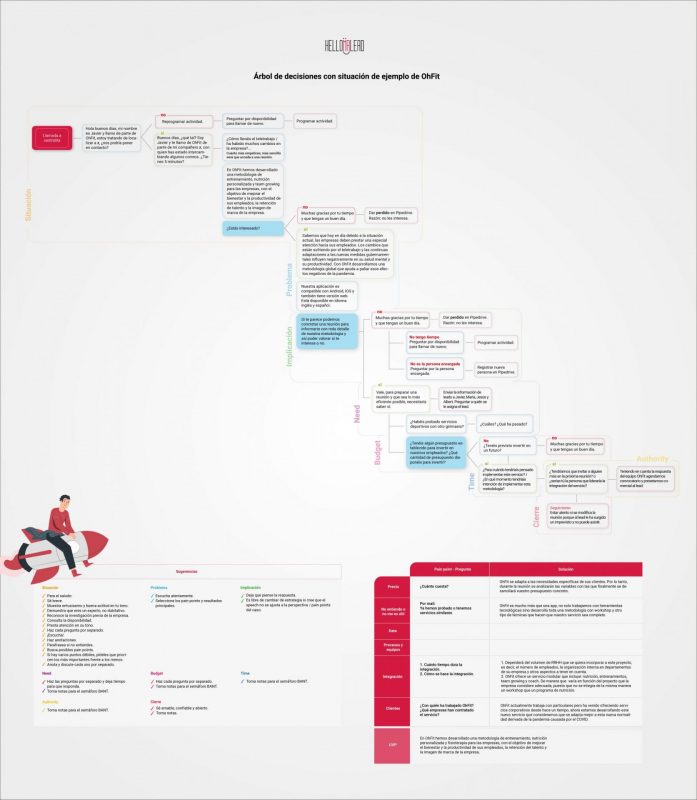Have you ever wondered what B2B means and how it works in the world of software-as-a-service (SaaS) sales?
If so, you’re in the right place.
In this article, we’re going to explore the fascinating world of B2B and how SaaS sales are changing the way companies do business.
What is B2B?
B2B, or business-to-business, is a business model in which one company sells products or services to another company, rather than to individual consumers. This model is common in many industries, but is particularly relevant in the world of software-as-a-service (SaaS) sales.
Why?
Because SaaS companies often offer solutions that help businesses operate more efficiently and effectively.
How B2B sales work
The B2B buying process
The B2B buying process begins with the identification of needs. A company recognises that it has a need that can be satisfied by a product or service. The company then evaluates potential suppliers, comparing factors such as price, quality and customer service.
Once the company has selected a supplier, the negotiation and purchasing phase begins. This phase may involve discussions about price, contract terms and delivery details. Once both parties are satisfied, the purchase is made.

The role of technology in B2B commerce
Technology plays a crucial role in B2B commerce. Companies use B2B platforms to discover and evaluate suppliers, place orders and manage their supplier relationships. In addition, technology can help companies automate and improve the efficiency of their purchasing processes.
Business-to-Business (B2B) trade is where transactions of goods or services take place between two companies. Technology has enabled significant transformations in the way companies conduct this type of trade. Let’s break down some of the ways in which technology is changing and shaping B2B trade:
Electronic platforms and B2B marketplaces: B2B platforms, such as Alibaba and Amazon Business, are using technology to connect buyers and sellers in one place, making it easier to find and compare products, and enabling more efficient and transparent transactions. This has also opened up opportunities for small and medium-sized enterprises that now have access to larger markets.
Process automation: In B2B commerce, many companies are using software and automation tools to improve the efficiency of their buying and selling processes. This approach extends to sales automation, a strategic tool that companies in a variety of industries are implementing to drive growth. This concept refers to a system or process designed to acquire leads and expand business efficiently, avoiding wasted time, money and effort on unnecessary testing. In this context, HelloMrLead’s Sales Automation Method has proven to be a successful model. Specifically, order management systems can automate tasks such as inventory tracking, invoice generation, and shipping logistics, enabling greater operational efficiency and cost reduction.
Artificial intelligence and data analytics: AI and data analytics technologies can help businesses make more informed and accurate decisions. For example, they can use customer behavioural data to forecast demand trends and optimise their inventory. In addition, AI can improve the customer experience by personalising product recommendations and providing more effective customer support
Communication and collaboration: Cloud-based communication and collaboration tools enable more effective collaboration across teams and with external partners. Customer Relationship Management (CRM) platforms are also essential for managing and improving customer relationships.
Security: As B2B transactions often involve large amounts of money and sensitive data, security is a major concern. Advanced security technologies, such as cryptography and two-factor authentication, can help protect transactions and business data.
As such, technology is playing a crucial role in the evolution of B2B trade, enabling faster, more efficient and secure trade. However, it also presents new challenges, such as the need to protect data and keep up with rapid technological innovations. Companies that can take advantage of these technologies and adapt to this changing environment will be well positioned to succeed in the future.
Benefits and challenges of B2B trade
One of the main benefits of B2B trade is the ability to establish long-term relationships with suppliers. These relationships can result in lower prices, better customer service and access to high quality products and services.
In addition, B2B trade often involves larger order sizes than B2C trade. This can result in higher revenues and profits for suppliers.
Finally, B2B trade can offer greater predictability of demand. Companies often place regular and predictable orders, which can help suppliers plan and manage their production.
Some of the most notable benefits include the following:
Long-term relationships
Enabling competitive prices, better customer service and access to high quality products. In other words, it goes beyond lead acquisition, it is about relationships, where customers are more than just numbers and deals.
Higher order volume
B2B transactions tend to be larger than B2C, which can result in higher revenues and profits.
Predictability of demand
B2B orders tend to be regular and predictable, making production planning and management easier.
Economies of scale
Large volumes allow for more efficient production at a lower cost per unit.
Continuous improvement
Long-term relationships and frequent communication can lead to product and service improvements.
Transaction security
B2B transactions, generally of high value, require stringent security measures.
Challenges of B2B trade
While B2B trade presents a number of opportunities, it also involves certain challenges that companies must address to ensure efficient and cost-effective management. Some of the most common challenges include:
Intricate sales processes
Sales procedures in B2B commerce can be more extensive and more convoluted than in B2C commerce, demanding a greater commitment in terms of sales and promotion.
Complex procurement decisions
Procurement decisions in B2B commerce are often more detailed and complicated. Companies must evaluate factors such as cost, quality, customer service and compatibility with their existing operations.
Demand for adaptability
Companies in B2B commerce often have unique requirements that demand tailored solutions, which can increase the complexity and expense of transactions.
Success stories of companies using the B2B model
Factorial
Factorial is an excellent example of a highly successful B2B company. This Spanish company offers a cloud platform with different tools and services that help organisations to make their human resources areas more efficient and provide incentive solutions for workers.
Its contribution has been key for many companies to keep track of their workforce data in one place. It allows powerful management of aspects such as registrations, absences, schedules, among other administrative processes.
Based in Barcelona, Spain, Factorial has more than 60,000 companies using its software. In 2020 alone, it attracted an investment of more than 15 million euros and its impact has led it to grow into other countries.
What has it done to position itself? The company focuses on serving other companies; knowing that one of the main pains of any company is to organise staff, its solutions are simple but efficient. Its success is due to results; an organisation that manages to save 30 hours a month in administrative tasks will surely be happy to be their client.
Factorial is characterised by a personal and human attention, breaking down the myth that B2B businesses are cold. Their employee benefit plans have given them a big boost because they link human resource management with employee satisfaction – a formula that delivers results for companies, such as increased productivity and retention of valuable talent.
SAP
SAP is one of the companies behind the success of hundreds of businesses around the world. That’s because it is the largest software services provider in Europe and one of the largest globally.
Although the German company has been in business for more than 50 years, it has retained the same mission over the decades: to assist businesses with technologies that help them process data. Its focus revolves around serving the process, consumer and service industries, as well as financial institutions and even utilities.
What has it done to position itself? SAP has tailored its portfolio of services and products to serve not only large global corporations, but also the small and medium-sized businesses that now account for a large share of global commerce.
The company has also had to stay ahead of the curve by developing increasingly complex, automated and powerful technologies that drive businesses through a digital transformation.
In the past decade SAP decided to raise the costs of its services for all its customers. This was not well received by enterprises, who demanded a re-evaluation of fees. Just a few months later, SAP reconsidered the strategy and, in order to benefit its customers, lowered its fees, showing its commitment to offering solutions that meet the needs of consumers.
Slack
If you have teams in your company that need to stay in communication for project development, you’ve probably heard of Slack. This business communication platform is a favourite of thousands of businesses around the world, due to its ease of use and the possibilities it offers for work management.
With more than 10 million active users every day, there are many companies that take advantage of its functionalities to make work more friendly and efficient.
What has it done to position itself? Traditional ways of working are being abandoned day by day all over the world. In the last couple of years, there has been an increase in remote work offers or work from home schemes. Slack has taken advantage of this phenomenon to offer companies a secure, simple and reliable way to stay in touch, despite distance, and make it easier to manage collaborative tasks.
This platform enhances flexibility and connection from anywhere and at any time, something that more and more companies are looking for in order to offer quality services to their users. Without a doubt, Slack will continue to be the favourite choice of thousands of companies that have carried out their digital transformation process.
Conclusion
B2B sales is an important business model that offers many opportunities for companies. However, it also presents challenges. Success in B2B commerce requires a deep understanding of customer needs and expectations, as well as the ability to deliver solutions that meet those needs and exceed those expectations. As we have seen in the success stories of Factorial, SAP and Slack, companies that can do this have a great chance of success.





